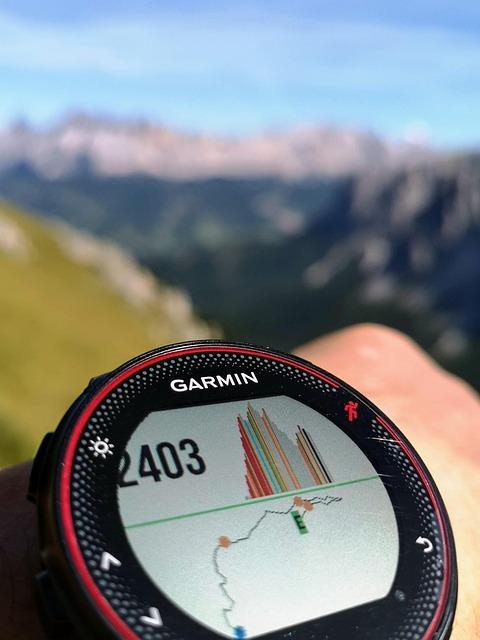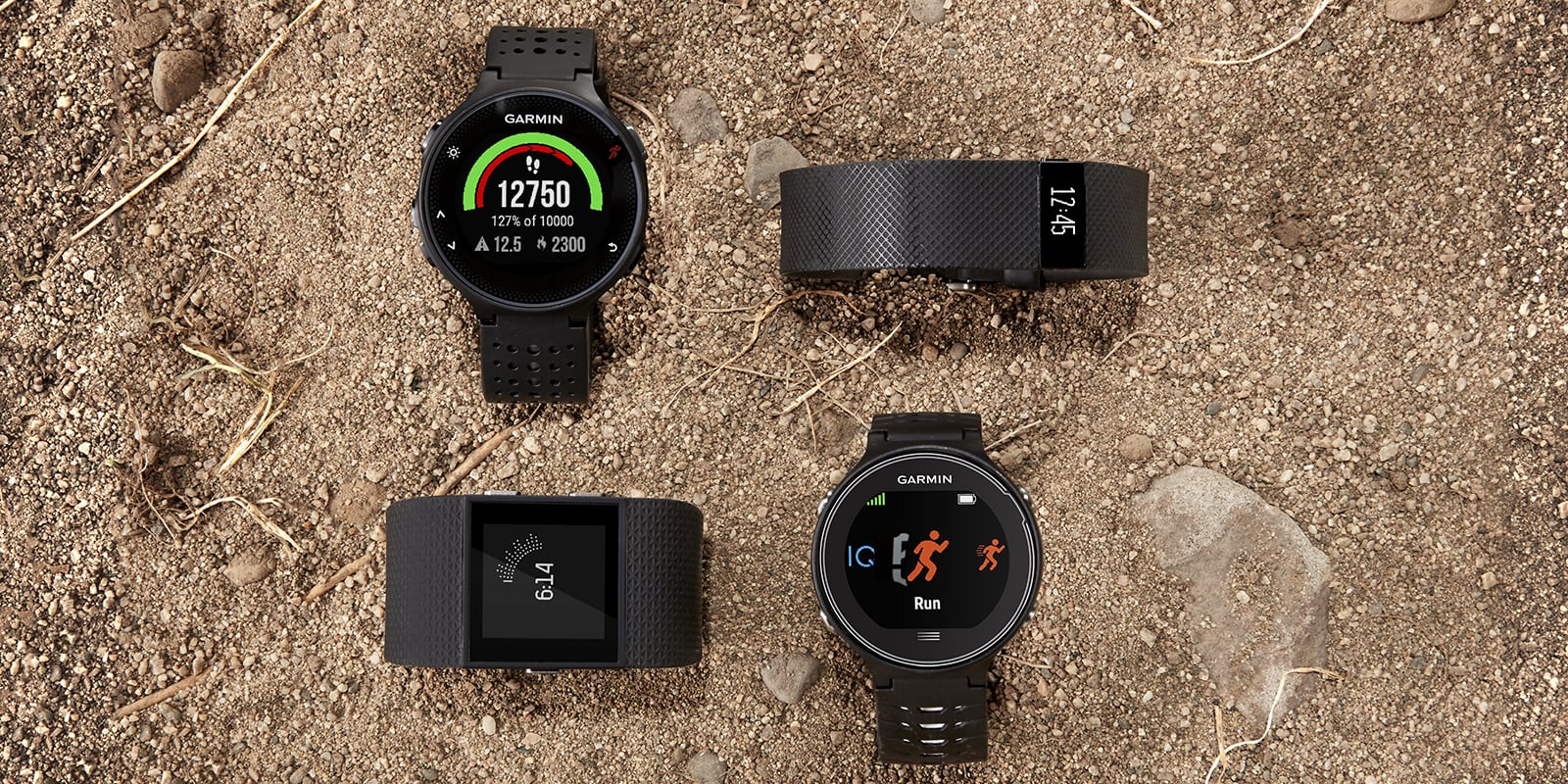In the heart of the wilderness, where the trails wind through towering trees and along rugged ridges, every runner knows that the journey is as significant as the destination.For trail runners seeking to navigate the natural world’s unpredictable terrain, a reliable companion is essential.Enter the Garmin GPS watch, a sophisticated piece of technology designed to enhance the trail running experience. With its advanced features focusing on pace, elevation, and heart rate, this watch transforms the way athletes measure their performance and explore new paths. In this article, we delve into the capabilities of the Garmin GPS watch, exploring how it equips trail runners to track their adventures and conquer both the physical and mental challenges of the great outdoors. Whether you’re sprinting through a sun-dappled forest or climbing steep mountain passes, this guide will illuminate how technology merges with nature, allowing you to run farther, harder, and smarter.
Exploring the Terrain: How Garmin GPS Watches Enhance Trail running Experience
Trail running is more than just a sport; it’s an immersive experience that connects runners with nature and challenges them in dynamic environments. With a Garmin GPS watch strapped to your wrist, you become equipped not only with stylish technology but also with a powerful tool to enhance your performance. These devices excel in tracking key metrics that are crucial for trail runners, such as:
- Pace – Quickly adjust your speed according to changing terrain.
- Elevation – monitor your ascent and descent to tackle hills confidently.
- Heart Rate – Stay within your optimal heart rate zone for endurance.
Moreover, Garmin GPS watches come with navigational features that transform the way you explore trails. With topographic maps and built-in route guidance, you can discover new paths safely and efficiently. Runners can also benefit from customizable alerts for pace and heart rate, ensuring that they remain aware of their exertion levels while fully engrossed in the natural beauty around them. For those who like to share their adventures, the compatibility with fitness apps allows for easy tracking of your progress, which not only keeps you motivated but also aids in strategizing your future runs.

Mastering Your Pace: Navigating Distance and Speed with Precision
For trail runners, maintaining an optimal pace is crucial not only for performance but also for safety across diverse terrains. The Garmin GPS Watch offers advanced features that empower runners to track their speed and distance with precision. Equipped with a satellite navigation system, it provides real-time data, allowing you to make informed decisions about your pace. Achieving balance between speed and endurance can be accomplished effectively by utilizing features such as:
- real-Time Speed Monitoring: keep an eye on your current pace to adjust your effort accordingly.
- Distance Alerts: Set alerts to notify you when you’ve covered a predetermined distance.
- Pace Pro Feature: Plan your strategy with customized pace plans based on your target race.
When tackling elevation changes on challenging trails, having a clear understanding of your heart rate is as significant as pace. The Garmin watch’s integrated heart rate monitor provides valuable insights into your cardiovascular exertion, enabling you to train smarter. This is particularly beneficial for ascending steep inclines where physical demand spikes. Consider the benefits of pairing heart rate data with elevation data:
| Elevation Gain | Projected Heart Rate zone |
|---|---|
| 0-500 ft | Zone 2 (Fat burn) |
| 500-1000 ft | Zone 3 (Cardio) |
| 1000+ ft | Zone 4 (Anaerobic) |

Elevation Insights: Tracking Altitude changes for Optimal Performance
Understanding how elevation impacts your performance can transform your trail running experience. The right Garmin GPS watch provides real-time data on changes in altitude,helping you to plan your route more effectively. Monitoring your ascent and descent enables you to adjust your pace accordingly and conserve energy for challenging climbs or technical descents. This not only helps in maintaining a steady effort but also improves your overall performance in varied terrains.
Using elevation data, you can analyze your runs with insights that extend beyond distance and pace. Here are a few features that can enhance your trail running training:
- Elevation Gain: Track cumulative elevation gain to understand the intensity of your run.
- Grade Adjusted Pace: Evaluate how uphill and downhill sections affect your overall pace.
- Altitude Alerts: Get notified when you reach specific elevation milestones.
- customizable Elevation Profiles: Visualize elevation trends for granular analysis of each segment.
| Feature | Description |
|---|---|
| ascent Rate | Measures how quickly you’re gaining elevation. |
| Descent Rate | Indicates how quickly you’re losing elevation. |
| Elevation Graphs | Visual depiction of your elevation changes over time. |

Heart Rate Monitoring: Enhancing Endurance and Recovery Strategies
Heart rate monitoring plays a crucial role in maximizing training efficiency for trail runners. By closely tracking heart rate data, athletes can identify their optimal training zones, allowing for tailored workouts that push their limits without compromising recovery. This awareness can enhance endurance as it aids in determining the right balance between aerobic and anaerobic exercise, ultimately leading to improved performance over lengthy, uneven terrains. With features such as real-time heart rate tracking, a Garmin GPS watch empowers runners to stay in tune with their body’s signals, ensuring they build stamina while avoiding overtraining.
Incorporating heart rate variability (HRV) metrics into recovery strategies further enriches performance potential. Runners equipped with a Garmin GPS watch can use HRV data to monitor their physiological stress levels and recovery status. This information helps in adjusting training loads, allowing for better-timed rest days or active recovery sessions. By focusing on the following key elements, athletes can enhance their recovery process:
- Sleep Quality: Quality sleep aids in heart rate recovery.
- nutritional Timing: consuming nutrients post-run supports cardiovascular repair.
- Hydration Levels: Proper hydration can stabilize heart rate during recovery.
| Recovery Factor | Impact on Heart Rate |
|---|---|
| Sleep Duration | Decreases resting heart rate |
| nutrition | Promotes heart health |
| Hydration | Stabilizes heart function |
Key Takeaways
As we lace up our trail runners and set off into the wild, it becomes essential to have a reliable partner by our side. The Garmin GPS watch, equipped with precision tracking for pace, elevation, and heart rate, is more than just a gadget; it’s a companion that transforms your running experience. Whether you’re traversing winding paths through dense forests or conquering steep mountain trails, this watch offers the insights you need to enhance your performance and enjoy the journey.
By harnessing the power of advanced technology, you can navigate the unpredictable terrain with confidence and embrace the thrill of the outdoors. So, as you embark on your next adventure, consider the ways the Garmin GPS watch can elevate your runs not just in terms of metrics, but in the heart and spirit of exploration. Embrace the mountains, savor each stride, and let the trails unfold beneath your feet—all while staying connected to your fitness goals. Happy trails!



